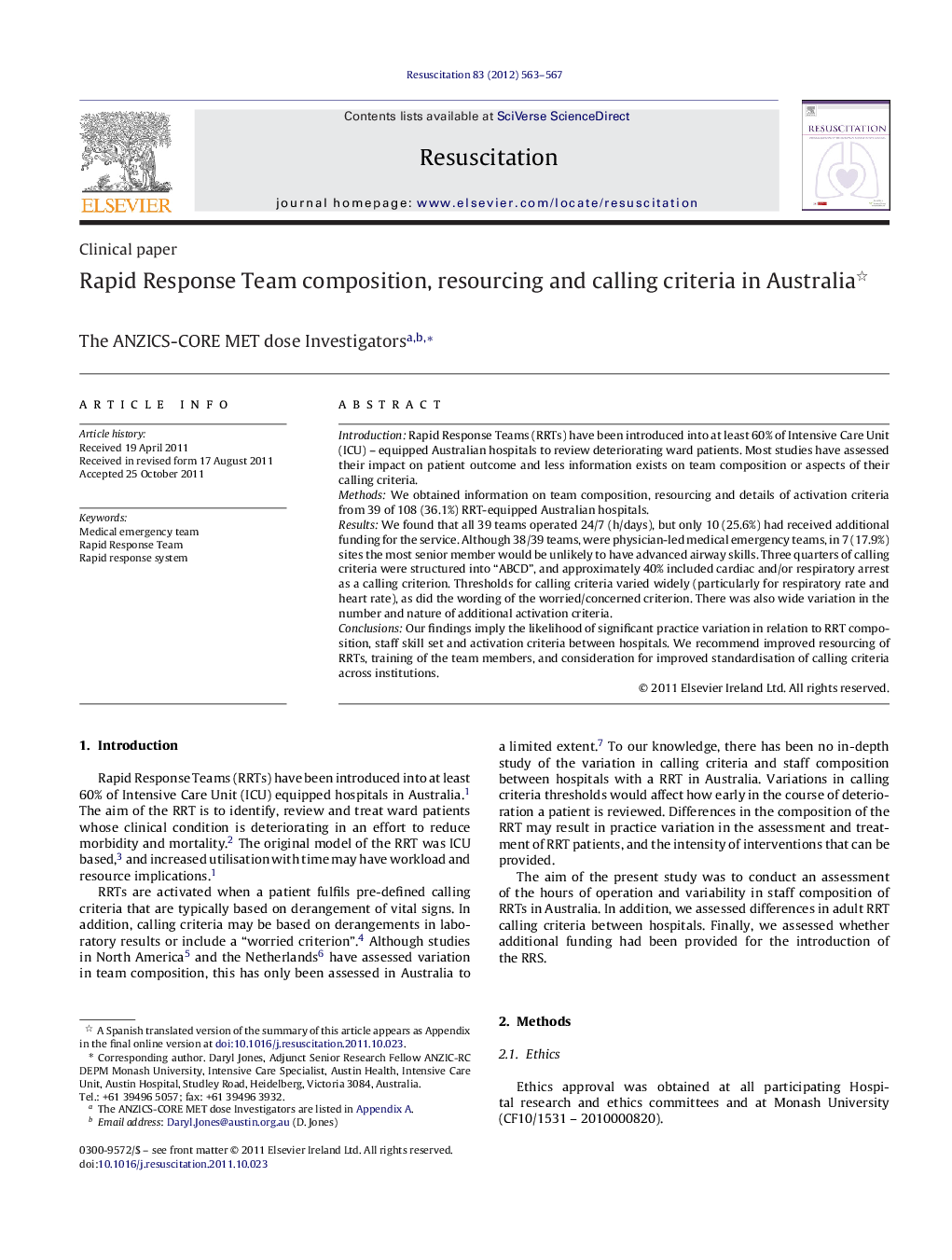| Article ID | Journal | Published Year | Pages | File Type |
|---|---|---|---|---|
| 5999110 | Resuscitation | 2012 | 5 Pages |
IntroductionRapid Response Teams (RRTs) have been introduced into at least 60% of Intensive Care Unit (ICU) - equipped Australian hospitals to review deteriorating ward patients. Most studies have assessed their impact on patient outcome and less information exists on team composition or aspects of their calling criteria.MethodsWe obtained information on team composition, resourcing and details of activation criteria from 39 of 108 (36.1%) RRT-equipped Australian hospitals.ResultsWe found that all 39 teams operated 24/7 (h/days), but only 10 (25.6%) had received additional funding for the service. Although 38/39 teams, were physician-led medical emergency teams, in 7 (17.9%) sites the most senior member would be unlikely to have advanced airway skills. Three quarters of calling criteria were structured into “ABCD”, and approximately 40% included cardiac and/or respiratory arrest as a calling criterion. Thresholds for calling criteria varied widely (particularly for respiratory rate and heart rate), as did the wording of the worried/concerned criterion. There was also wide variation in the number and nature of additional activation criteria.ConclusionsOur findings imply the likelihood of significant practice variation in relation to RRT composition, staff skill set and activation criteria between hospitals. We recommend improved resourcing of RRTs, training of the team members, and consideration for improved standardisation of calling criteria across institutions.
